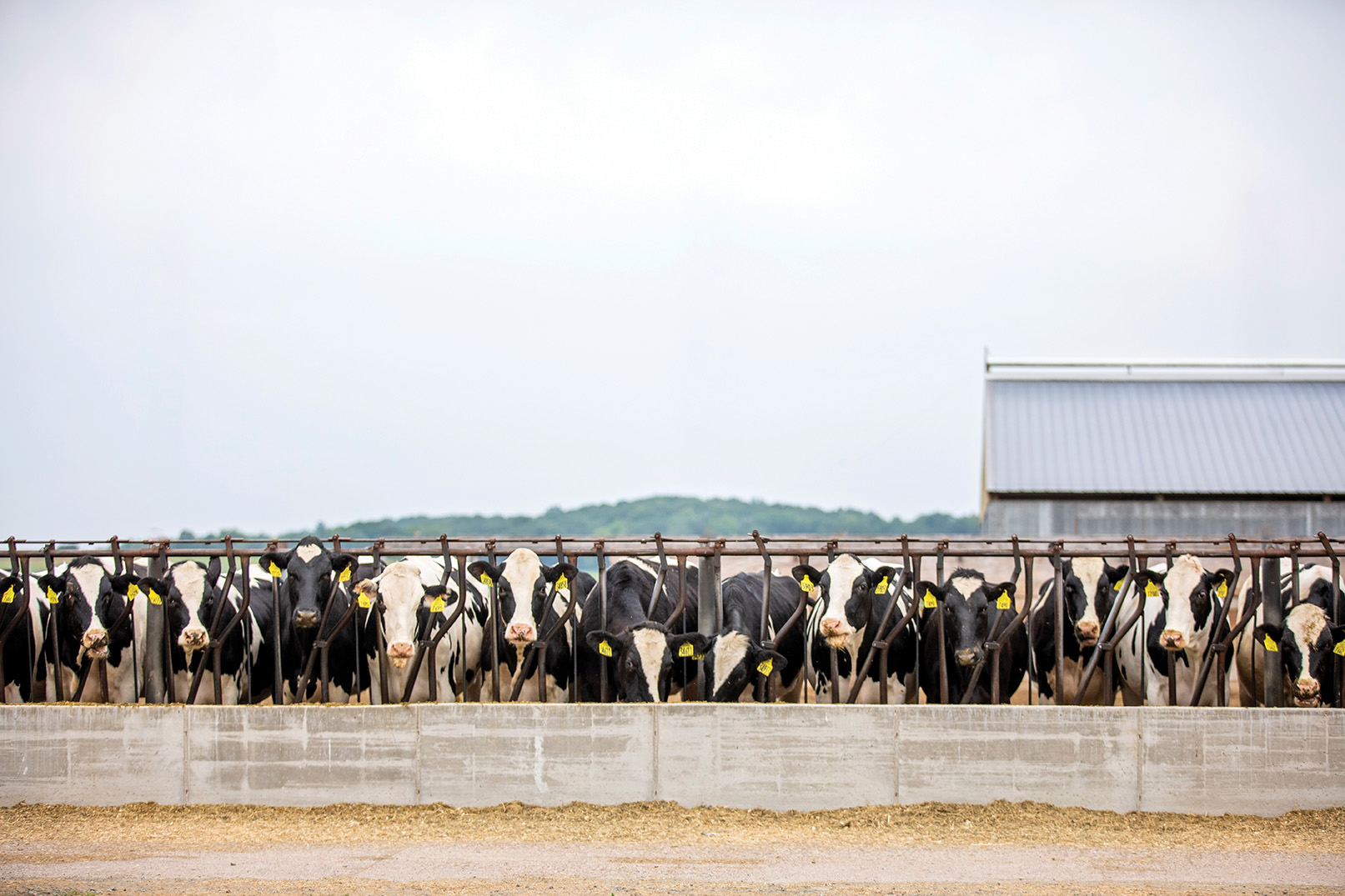
By: Kaitlyn Briggs, DVM, MBA, Director of Environmental Research, DMI
When it comes to efficiently utilizing resources, feeding the world, and caring for animals, the dairy industry is already a success story in sustainability. However, often when people discuss sustainability and dairy, they immediately think of the emissions associated with dairy cows. What if we look more holistically at the cow and the management decisions made on farm that impact her in order to capture a more complete story of sustainability and the levers that can be pulled to improve sustainability?
We know, because we can measure, that a cow making 70 pounds of milk each day makes less methane than a cow making 90 pounds each day. However, wouldn’t we all rather have a barn full of cows who can eat a few more bites of the same feed and make 90 pounds rather than 70? Of course! We know that the 90-pound cow is more efficient than her 70-pound cohort; she spreads her fixed inputs (feed needed to maintain life and pregnancy) over more milk, so even though she makes more methane, because she eats more, she makes milk with a smaller methane footprint per gallon of milk. As an industry, we have learned an immense amount about dairy cattle nutrition throughout the past 50 years and implemented these findings in how to feed our cows to optimize their production and therefore their sustainable production of milk. We have also spent decades focusing on long-term genetic improvement of milk production, with each generation of cows demonstrating improved milk (and milk solids) production than previous.
A lesser considered, but equally important, reason for progress in milk production efficiency is health. We can all rally around the ideas that clean, comfortable housing, prevention, early detection and treatment of disease and high reproductive efficiency are advantageous for improved performance. While there are many management levers that can be pulled to achieve improved performance, one that is becoming increasingly researched is genetic selection for health. 
Over the past 25-30 years, we have started recognizing the importance of traits other than type and production in genetic selection and have started to see the impacts. In fact, since the early 1990s, when health traits including fertility were first introduced into genetic indices, we have seen a rapid improvement in reproductive performance of dairy cattle, including cyclicity, expression of estrus, and improved conception rates compared to the decline in fertility in decades prior to this integration (Lucy, 2019). Even more recently, other health traits have been added to genetic indices and we are beginning to see these same quantifiable impacts when selecting for health traits or using indices that consider health and longevity.
We are seeing that not only can we manage for healthier, more fertile cows, but we can selectively breed for these cows; cows who are at a lower risk of mastitis, transition diseases, who have improved reproductive performance, and who will have a lower risk of being replaced by a younger animal because they are healthy and making more milk. Just as we have seen a compound impact of milk production generation by generation, we will see a compounding impact of improved health and fertility over the generations.
While a quantifiable impact of improved cow health and fertility on emissions is not available today, we do know that a cow with a case of mastitis has 6% higher emissions per gallon of milk produced than her counterparts that do not have mastitis (Mostert et al, 2019). Compound that on the herd, or over generations, and we can make large amounts of progress in our sustainability journey with healthier, more fertile cows.
Think back to our 70-pound vs. 90-pound cows. Everyone in the dairy industry, from farmers to veterinarians, nutritionists to dairy buyers, knows that healthy, well-cared-for cows make the most efficient, and therefore most profitable, milk. Let’s add to that and unite around the idea that these same cows make the most sustainable milk. One lever we can pull to improve health and sustainability is through genetic selection!
Lucy, MC. 2019. Symposium review: Selection for fertility in the modern dairy cow—Current status and future direction for genetic selection. Journal of Dairy Science 102(4), 3707-3721. https://doi.org/10.3168/jds.2018-15544
Mostert, P., Bokkers, E., De Boer, I., & Van Middelaar, C. (2019). Estimating the impact of clinical mastitis in dairy cows on greenhouse gas emissions using a dynamic stochastic simulation model: A case study. Animal, 13(12), 2913-2921. doi:10.1017/S1751731119001393
Photos © Farmgirl Photography